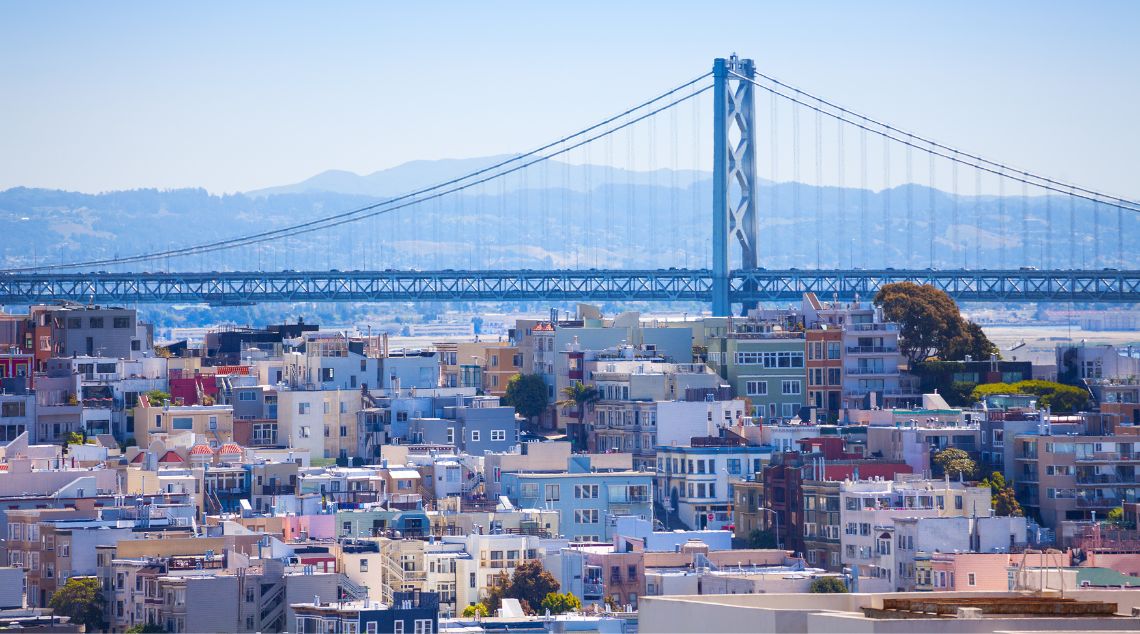It is rare for pro-police groups and the NAACP to agree on anything. And yet, the severity of the Oakland crime emergency has now triggered this unlikely result. Speakers from all sides of the political spectrum now agree it’s the time for radical action – even if their proposed solutions remain diametrically opposed.
The latest uptick in Oakland’s crime rates should be a lesson for the rest of the country. As residents express record levels of uncertainty, mayors and leaders must prevent similar scenarios at home.
The Oakland Crime Emergency – By the Numbers
Oakland’s long been infamous for its crime rates, which first began to rise in the 1960s. By the 1970s, the city had left nearby San Francisco and San Jose behind. During the following decades, a combination of drug trafficking, gang activity, and high levels of poverty positioned it as one of the most dangerous cities in the United States.
Following the 1980’s crack epidemic, homicides hit the highest in 1992. Then, alongside the rest of the nation, Oakland’s crime rates also began to dwindle.
The trend remained stable until 2020, when the yearly homicide count surged unexpectedly from 78 to 108 and 134 in 2021. Over the past couple of years, the murder rate went down once again – but burglaries and violent robberies continue rising. Currently, Oakland’s total violent crime rate is 70 per one thousand residents – three times the national average.
The statistics are not evenly distributed across all population sectors, however. They are mainly concentrated in East Oakland, which now houses several “no-go” zones. Burglaries and homicides continue to disproportionally affect minority communities, especially majority African-American neighborhoods.
Throughout 2023, the rate of house invasions, burglaries, and carjacking shot up again. This time around, the elderly, disabled, and other vulnerable adults seem to be the most frequent targets. In many East Oakland areas, the police now recommend that residents add security bars to their doors and carry horns to alert neighbors to intruders.
What Happened in Oakland?

Oakland’s reputation as a “dangerous city” has been decades in the making. However, the latest spike hit the city sharply and quickly: between May and July, crime rates increased by a further 26%.
As a result, Oakland’s Mayor Sheng Thao declared a city-wide State of Emergency, hoping to use these exceptional circumstances to mobilize resources quickly. But long-term problems can rarely be fixed with short-term stopgaps. Oakland’s crime troubles are now too old and too complex to pinpoint a single cause.
Yet, many law enforcement scholars agree that, over the past five years, circumstances were worsened by a combination of factors: well-known “crime hotspots” are insufficiently served by police officers, who have left the force in droves; gangs from neighboring cities in the Bay Area found Oakland a comfortable location in which to operate; and the increasing hostility between police officers and residents created room for investigations to go amiss.
All these issues have now created the impression that in Oakland, crime goes unpunished. For regular citizens, this leaves little choice but to stay inside after dark. For budding criminals, it’s a feast.
A Warning to Other American Cities
Just like the rest of the Bay Area, Oakland is a liberal stronghold. The Mayor, the City’s State Senator, and the Area’s U.S. Congresswoman are all Democrats, as are most members of the City Council. With near absolute control, many cities in the Bay Area have served as radical trials for the “defund the police” movement.
The results? Far from positive. Millions of dollars were shuffled away from Police Departments and into social services. However, this has done little to reduce homelessness rates or to keep drug addiction from spreading. The now poorly funded police department struggles to man its patrols. The region has one of the nation’s highest costs of living, making a career in law enforcement unattractive for newer generations.
According to Cynthia Adams, President of the Oakland NAACP, the problem stems from “failed leadership, including the movement to defund the police, the proliferation of anti-police rhetoric, and the local district attorney’s unwillingness to charge and prosecute people who murder and commit life-threatening serious crimes.”
“We need the Police,” she concludes. The rest of the nation should listen.
Image Source: Canva









